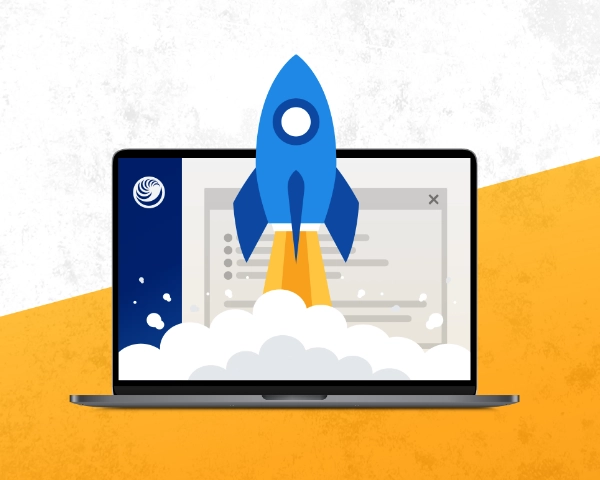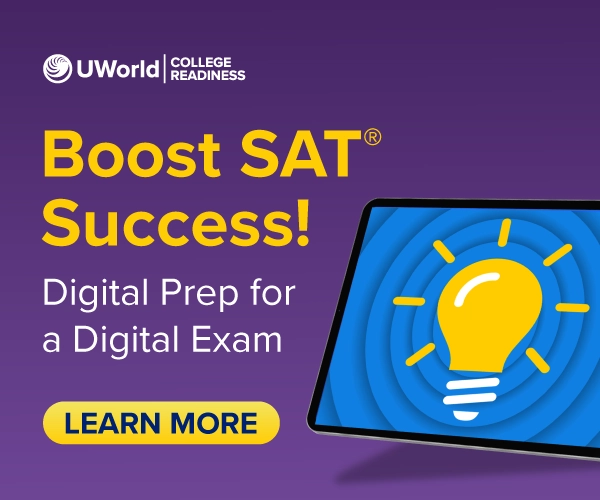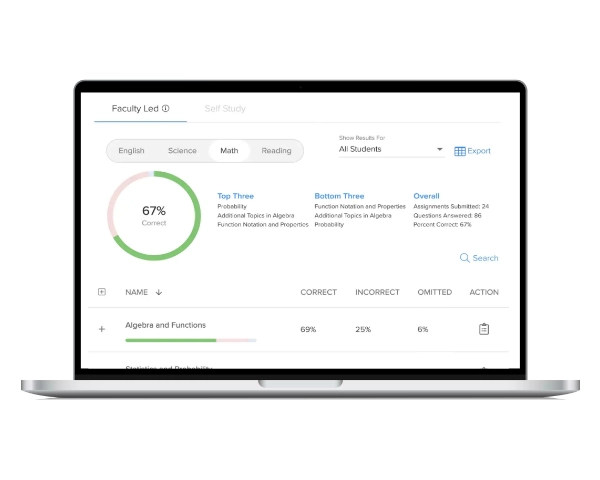You’ve likely heard, “We need to shift our focus to digital SAT® and AP® exam prep,” more times than you’d care to count. Yet, like many educators, you might still reach for the familiar pencil-and-paper drills that once helped your students do well. Digital exams call for new digital prep approaches — and making that shift can give your learners a true advantage on test day.
If Your Test Prep is Older Than Your Students, It’s Time for a Change
There’s a certain comfort in familiar pencil-and-paper test prep methods. However, digital exams such as the SAT and many AP tests require on-screen navigation and rapid feedback adjustments that aren’t fully developed through paper-based practice. Multiple studies confirm that digital learning tools better prepare students for a digital testing experience, exposing them to the exact format and functions they’ll encounter on exam day. It may be time to update your test prep strategies so students can walk into digital exams with the skills and confidence they need to succeed.

The Science Behind Digital Learning
Digital tools transform classroom instruction into an interactive experience that boosts student engagement and provides immediate feedback. By integrating technology thoughtfully, you can strengthen the connection between your lessons and real-time performance data, ensuring your students gain the skills and confidence they need for online assessments.
Building Digital Literacy
Integrating technology into your classroom helps students build digital literacy skills that directly impact exam performance. Research has shown that rapid-feedback electronic assessments increase engagement and enhance academic outcomes by reducing errors and focusing attention on areas of need.1
A recent study found that students with strong information and data literacy skills were 2.2 times more likely to pass online courses, underscoring the powerful connection between digital competence and success in a virtual testing environment.2 Likewise, district-wide findings suggest that essential skills such as typing speed, screen navigation, and word processing play a major role in boosting achievement on computer-based standardized tests.3
By weaving digital literacy activities into your day-to-day instruction, you can equip your students with the fluency and confidence required for modern exams.
Familiarity With Digital Test Formats
Familiarizing your students with digital test formats can significantly ease the transition between classroom practice and actual exam environments. Research shows that regular exposure to online tools diminishes computer anxiety and improves comfort with digital navigation.1 As a result, students are better able to focus on content knowledge rather than getting distracted by on-screen mechanics or complex user interfaces.
In one study, learners who consistently engaged with computer-based resources performed substantially better on electronic tests. This underscores that a deeper familiarity with digital formats can lead to reduced anxiety and higher achievement.
Enhanced Learning and Engagement
Digital instructional resources can transform your classroom into a dynamic environment where students are more motivated, focused, and consistently engaged.4 Research on real-time feedback confirms that when you integrate interactive tools — such as instant polling or adaptive quizzes — your learners devote more time to practice and show higher completion rates.5 This added engagement drives deeper understanding of test material and helps you quickly pinpoint areas where students need extra support.
By weaving these digital strategies into your daily instruction, you can better tailor lessons, track student progress, and ultimately foster an atmosphere that elevates teaching effectiveness and student outcomes.
Real-Time Feedback and Performance Tracking
Digital instructional resources give you immediate insight into each student’s performance, making it easier to tailor instruction and drive stronger learning outcomes. Through real-time analytics, you can quickly pinpoint gaps in understanding, personalize interventions, and deliver the right support at the right moment.
Research shows that this level of data-driven customization fosters deeper engagement and helps you refine your pacing and teaching methods to meet diverse needs.5,6 Platforms such as UWorld make this process simple by tracking course mastery, program effectiveness, and test readiness from the individual student all the way up to the district level. By regularly reviewing performance dashboards, you can celebrate improvements, identify areas for growth, and ensure that every learner remains on track for success.
Practical Differentiation and Accessibility
Digital platforms let you create personalized study paths that adapt to each learner’s pace and skill level, ensuring your students don’t miss crucial practice opportunities or receive needlessly repetitive content.
Research confirms that e-learning tools bolster engagement by tailoring lessons to real-time performance data, making it easier to spot gaps and swiftly address them for groups and individuals.7 This individualized approach increases retention and fosters independence. It also boosts satisfaction levels — benefits that extend to students of varying abilities, thanks to features including adjustable font sizes, text-to-speech, and alternate formatting for those with visual or cognitive challenges.
By grouping learners based on specific needs and offering time-saving solutions such as recorded lessons and chunked assignments, you can streamline differentiation while still covering essential skills.
Best Practices for Implementing Digital Test Preparation
One of the most effective ways to get started with digital test prep is to plan ahead and integrate online tools directly into your daily lessons. You can begin by choosing a consistent platform such as UWorld and introducing it in small doses during class. This approach ensures that your students become comfortable with digital question formats and on-screen navigation well before exam day. Along the way, you can use features such as quick polls and short practice quizzes to provide real-time formative feedback, which helps you modify instruction on the spot.
Another best practice is to scaffold technology skills right alongside academic content. For instance, dedicate a few minutes at the start of each lesson to discuss effective study techniques or demonstrate essential tech functions such as highlighting or note-taking within digital passages. Encourage students to track their progress, celebrate small gains, and set short-term goals based on performance data. This combination of structure, routine, and positive reinforcement around digital tools helps foster strong habits, boosts motivation, and prepares your learners for the content and testing format they’ll encounter on exam day.
Choosing the Right Digital Prep Tools
When choosing digital prep tools, look for platforms that align with your specific course objectives and students’ readiness levels and accommodate real-life constraints such as budget and device accessibility.
For example, UWorld’s SAT and AP solutions offer question banks designed to mirror official exam formats, complete with detailed answer explanations that reinforce deeper understanding. By selecting resources that closely match exam standards — while remaining intuitive for you and your students — you can minimize onboarding time and focus more on rigorous test practice for your students’ digital exams.

References
- Alyahya, D., & Almutairi, N. (2019). The Impact of Electronic Tests on Students’ Performance Assessment (EJ1214279). International Education Studies, 12(5), 109–115. Retrieved from https://files.eric.ed.gov/fulltext/EJ1214279.pdf
- [Author(s) Unknown]. (n.d.). [Article Title]. Sage Journals. https://journals.sagepub.com/doi/10.1177/20427530241232489
- [Author(s) Unknown]. (n.d.). Digital Literacy Assessment. Learning.com. https://www.learning.com/blog/digital-literacy-assessment/
- [Author(s) Unknown]. (n.d.). Leveraging Technology for Enhanced Test Preparation: A Research Exploration. College Tools. https://www.collegetools.io/blog/leveraging-technology-for-enhanced-test-preparation:-a-research-exploration
- Minkkinen, M. (2022). A Quantitative Study of an Online Learning Platform’s Impact on High School Students' Engagement, Academic Achievement, and Student Satisfaction in a Mathematics Class (Master’s thesis). Minnesota State University Moorhead. Retrieved from https://red.mnstate.edu/cgi/viewcontent.cgi?article=1710&context=thesis
- [Author(s) Unknown]. (n.d.). Using Data in Education to Enhance Teaching and Learning. Houghton Mifflin Harcourt. https://www.hmhco.com/blog/using-data-in-education
- [Author(s) Unknown]. (2024). 4 Research-Backed Ways to Differentiate Instruction. NWEA. https://www.nwea.org/blog/2024/4-research-backed-ways-to-differentiate-instruction/






